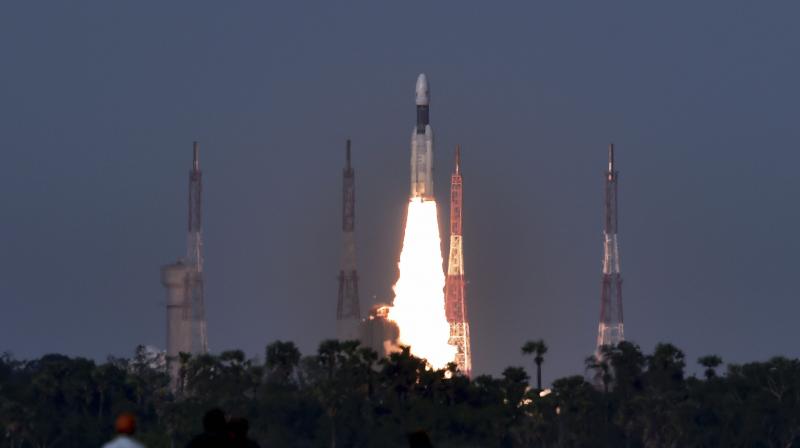Isro's 4-decade journey: From 40 kg to 4,000 kg
The GSLV Mk-III rocket can be used for all the interplanetary missions and the manned mission in future.

Sriharikota: Around 37 years after it successfully launched the SLV-3 rocket with Rohini satellite, the Indian Space Organisation is finally on the verge of getting indigenous heavier launch vehicle. From a meagre 40 kg payload in Satellite Launch Vehicle-3 (SLV-3), the GSLV-Mk-III has carried a payload of 3,136 kg to Geosynchronous Transfer Orbit.
There is considerable excitement and tension among Isro scientists about the new achievement. The GSLV Mk-III rocket can be used for all the interplanetary missions and the manned mission in future.
But, the development did not happen overnight. The US sanctions and infamous spy case put roadblocks to the development of the indigenous cryogenic engine and building powerful rockets.
The first major success in the journey was achieved by the team scientists headed by project director APJ Abdul Kalam.
The all solid SLV-3 rocket’s success on July 18, 1980, put India into the elite club of space-faring nations - the US, USSR, France, Japan, China and Britain – with the capability to launch satellites on their own.
The successful culmination of the SLV-3 project showed the way to advanced launch vehicle projects such as the Augmented Satellite Launch Vehicle (ASLV), Polar Satellite Launch Vehicle (PSLV) and the Geosynchronous Satellite Launch Vehicle (GSLV).
After SLV-3, Isro has started the Augmented Satellite Launch Vehicle (ASLV) project. It has facilitated the development and testing of various advanced technologies essential for large vehicles. The development of ASLV vehicles which almost took one decade was considered as a useless exercise by some quarters.
“Many are not giving the ASLV rockets its due. Isro scientists have mastered the advanced technologies like navigation, guidance and control system only during the development of ASLV rockets. If PSLV rockets now tagged as world class rockets for their reliability and versatility it is mainly because of ASLVs,” a senior scientist from Isro said.
After its first successful launch in October 1994, PSLV rocket has emerged as reliable and versatile workhorse launch vehicle of India with consecutively 38 successful missions. During 1994-2017 period, the vehicle has launched 46 Indian satellites and 180 satellites for customers from abroad.
It also used in landmark missions Chandrayaan-1 in 2008 and Mars Orbiter Mission in 2013. Geosynchronous Satellite Launch Vehicle Mark-II (GSLV-Mk II) which is currently in operation is fourth generation launch vehicle and it is a three-stage vehicle, the stage is all important cryogenic stage. The first vehicle launched in 2001. After the indigenous cryogenic upper stage was failed in 2010, it took four years to successfully design the new engine for the Isro scientists. From January 2014, the vehicle has achieved four consecutive successes.

